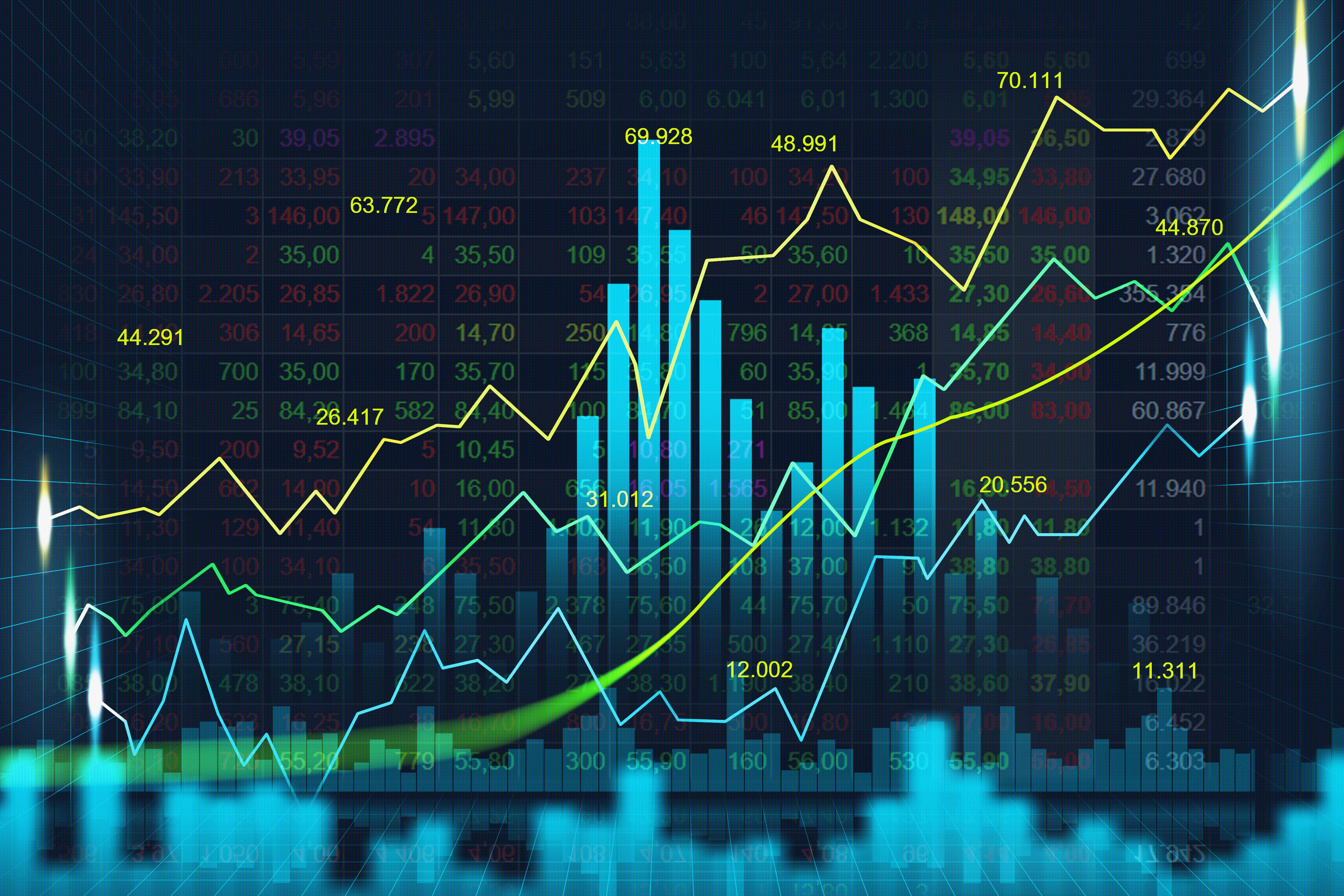Market Trend
The financial market provides a diverse platform for investors as they can trade variety of financial instruments and make significant increase on their investment. Traditionally, the financial markets were only accessed by a limited number of participants which mostly included banks and wealthy investors. But due to the increase in types of financial markets and advancement of technology, now anyone can become a trader and buy and sell stocks, currencies, commodities, and bonds.

Course name
Start trading
Today, an investor has access to evaluate the performance of the market before selecting or implementing any investment strategy. The fundamental and technical analysis portray all the necessary information needed for investors to determine if an investment opportunity exist or not. For example, a trader may look at the price chart to identify a pattern and predict the next price direction of a stock.
The financial data and tools help to give clearer picture of the financial market to the investors and help them devise the investment plan and strategy accordingly. The main purpose of both the fundamental and technical analysis is to let investors determine the trend of the financial market and capture the opportunity to try to profit.
Market Trend
In financial markets, the direction of price movements for a perceived time period is called ‘Market Trend’ which applies to all types of assets in markets where trading is done on movement of price or volume. The flow or movement from one price to another is where a profit or loss lies. The trends can be primary (medium-term), secondary (short-term), and secular (long-term) and provide equal opportunity for every investor to earn a profit or a loss.
An uptrend signifies higher highs and higher lows while a downtrend means lower highs and lower lows.
Traders and even general public are familiar with some of the trends in the financial markets. Many
of us already know the Bullish and Bearish trends that depicts the performance of the both the stock
and Forex markets. A Bull market means an upward trend in the market, while a Bear trend means a
downward trend.
The Factors That Shape Market Trends
The market trends are shaped due to large economic factors. The four factors that cause both the short-term trends and long-term trends and those that every investor should understand are
1. Government InfluenceThe government can increase and decrease the rate of growth through monetary and fiscal policy. The monetary policy is related to the increase or decrease in the interest rate by the government. The fiscal policy refers to tax rules and government spending that impacts economic conditions.
2. International TransactionsThe economy and currency of a country weakens if considerable amount of money leaves the country. Countries keep their economy strong if their exports are greater than the imports.
3. Speculation and ExpectationThe direction that politicians, investors, and consumers believe that the economy is going towards is speculation which can determine the future prices and direction of trend. The sentiment indicators measure what many groups think the economy is going.
4. Supply and DemandThe supply and demand for products, currencies and other investments also shape the market trend. The items in demand with decreasing supply will see their prices rise, if the supply of items increases than the demand, the prices will fall.
Each factor is different but more or less interconnected and cause both long-term and short-term trends. For example, the government policies could impact international transactions, which as a result influences speculation. If the government wants to change tax policy, or spending, and interest rates are also changed then ‘Long-term trends’ will be impacted.
A country’s balance of payments and strength of its currency also affects the market trends; if the currency is weak it would discourage the investors and drain all the profits. Similarly, the supply and demand is also analyzed in all the markets. The possibility of supply decreasing at current prices makes the buyers pay a high price, likewise if a group of sellers enter the market it would increase the supply and prices will fall.
Tools to measure Market Trends
Market trends are an integral part of technical analysis where historical price data and volume is evaluated to determine the future price movements of stocks or currencies. The current price of the stock is compared against the past prices and a trend is then identified. The traders identify the trends by using numerous tools which include price action, trend lines, and other technical indicators.
For example, trend lines connect two or more price points and show future direction of the trend and trend lines always move up and down the price charts. Relative Strength Index (RSI) is also used to show the strength of the trend at a certain point of time.
- Uptrend
When two or more low points are connected, the slope that is formed is a positive one and it is called an ‘Uptrend line.’ But for a positive slope, the second low should be bigger in value as compared to the first low. The trend is validated when at least three points are connected to form a trend line.
The uptrend shows that total demand is growing even if the price rises. The increasing demand and the rising price represent a very bullish trend. But nothing stays up for long periods and there will always be fluctuations and oscillations. A break under the uptrend line means that the demand is decreasing and direction of trend could change in future.
- Downtrend
When two or more low points are connected, the slope that is formed is a negative one and it is called a ‘Downtrend line.’ But for a negative slope, the second high must be lesser than the first and at least three points should be connected. The downtrend line specifies that the supply is increasing and the price is falling. The increase in supply and declining price means a very bearish trend. A break over the downtrend shows that the supply is decreasing and direction of the trend is about to change.
The trend analysis help traders to evaluate the market conditions and make a decision on when to enter or exit a trade. Many traders choose to trade in the same direction of the trend. The trend analysis allows traders to consider all the market factors which include changes in the internal and external forces along with competition in similar asset.
The traders are better adapted to predict short, intermediate, and long-term trends. The evaluation of trend helps traders to match the buying and selling of an asset, but it is important to also perform the fundamental analysis to determine any underlying causes that may influence the price and performance of a particular stock in the market. The information above is for education purposes only and cannot be considered as investment advice. Past performance is not reliable indicator of future results.



